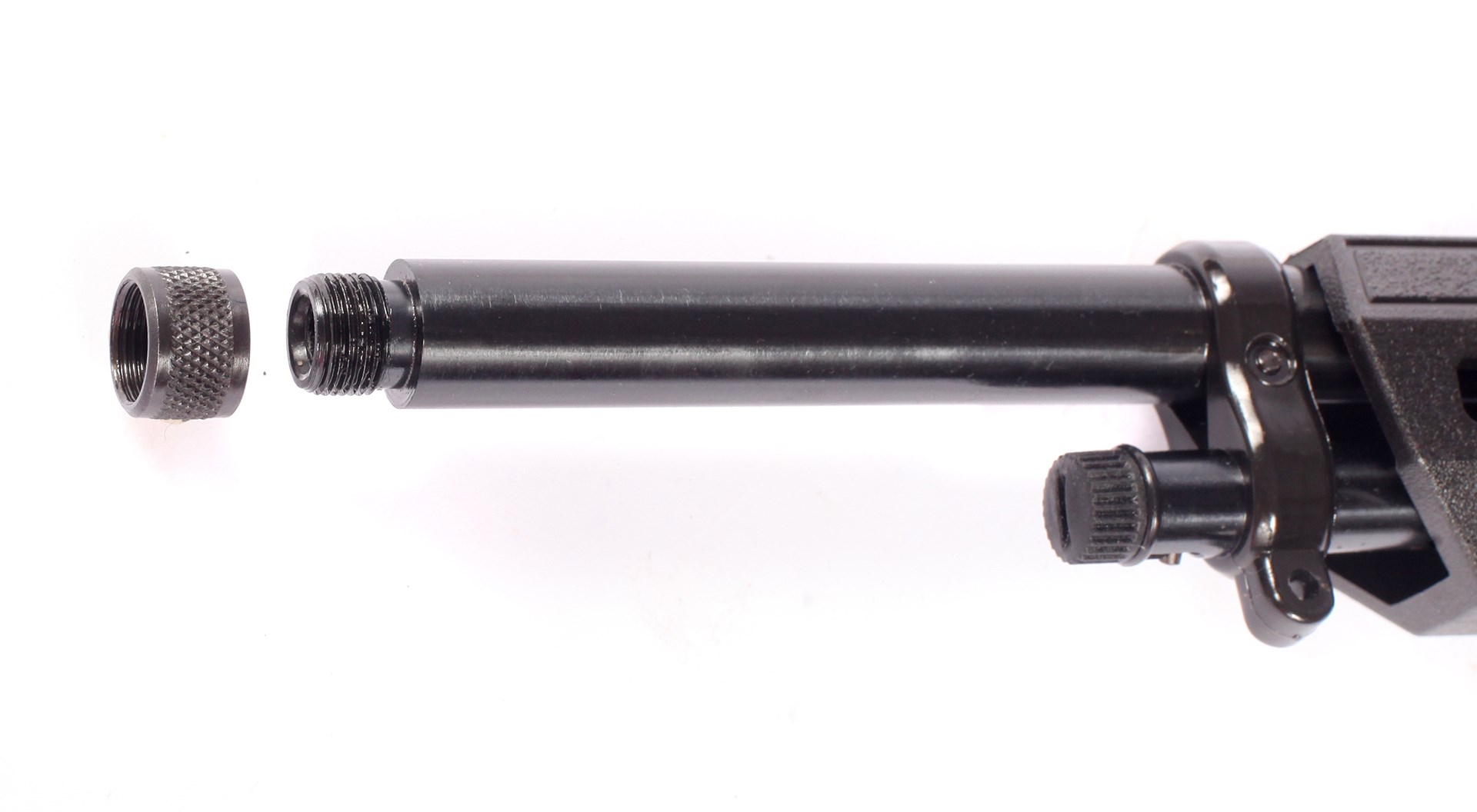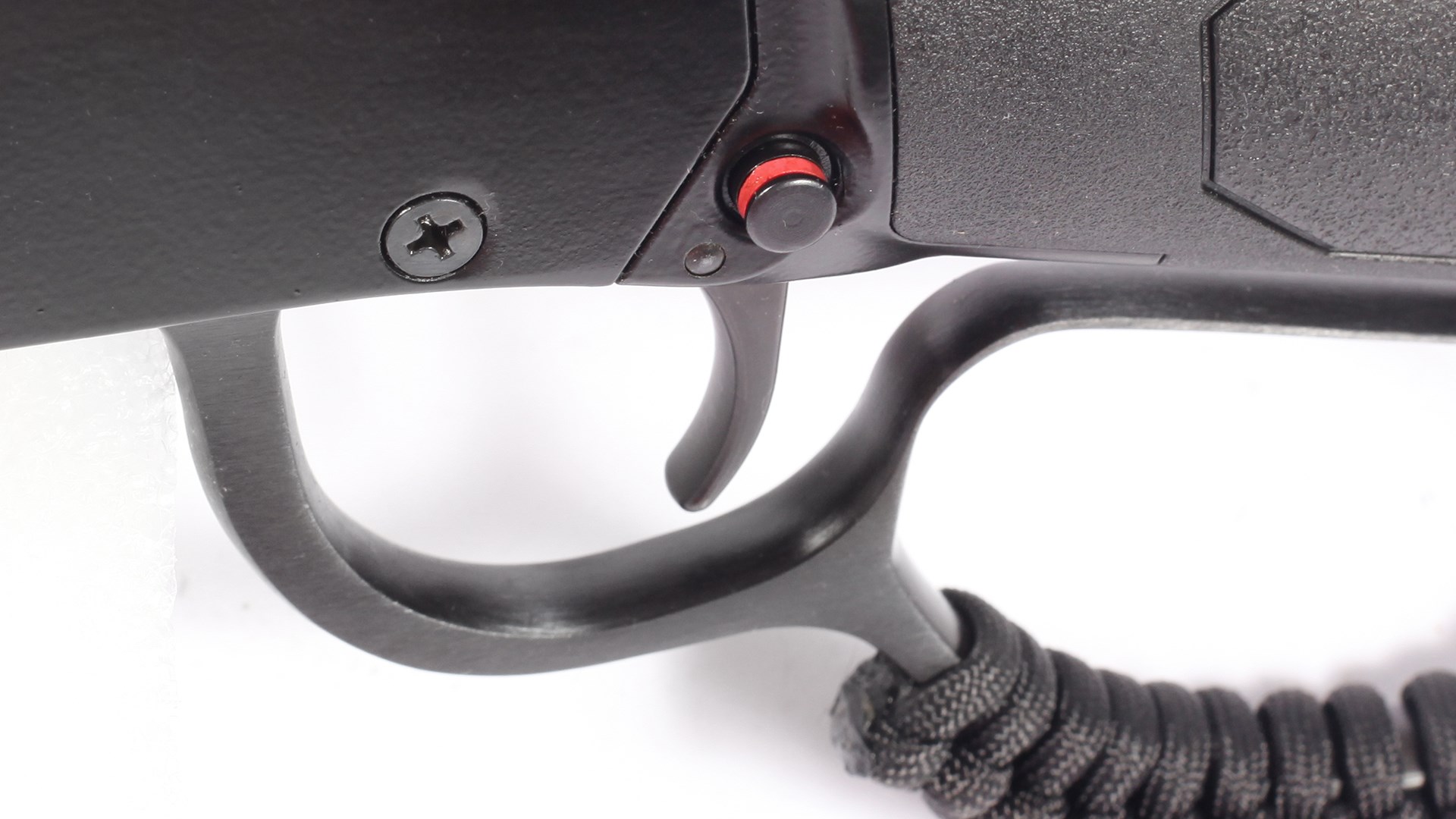Tack the term “tactical” onto a lever-action rifle, and you’d best be quick to grab your fireproof suit. Most people who have an appreciation for traditional firearms like a lever gun, also have a strong preference for things like saddle rings, iron sights, wood stocks and blued finishes … and they’re happy to make those opinions known. Much to their chagrin has been the recent rise of “tactical lever actions.” The juxtaposition of a historic design with features found on modern sporting rifles (MSR) might rub a traditional lever-gun aficionado the wrong way, but as many MSR owners well know, “tactical” features are popular because they have practical value. To illustrate this point, let’s take a look as the Rossi Rio Bravo Tactical introduced in early 2024.
Rossi, a Brazil-based manufacturer, has a long history of building lever-action rifles, from its original Puma, based on the Winchester Model 1892, which it still manufactures today. In 2020, the company introduced a line of rimfire lever guns, called the “Rio Bravo,” to complement the centerfire ones it had been building for decades. Up to this point (with the exception of optional polymer stocks and fiber-optic sights) the form of the Rio Bravo has followed traditional lines.

Based on the standard Rio Bravo, the Tactical model has adapted many of the styling features found on Rossi’s centerfire R92 and R95 Triple Black models. Out front, the barrel is threaded 1/2×28 TPI for attaching suppressors and other muzzle accessories, and is supplied with a thread protector. The Tactical’s barrel is shortened from the standard Rio Bravo’s 18” length to 16.5”, to make the rifle handier when a suppressor is attached. To make room for muzzle accessories, the magazine tube is shorter than a standard Rio Bravo. Shortening the magazine tube to approximately 3/4-length reduces capacity by five rounds to 10. A suppressor would have to have a diameter of around 1”, as most rimfire-specific ones do, to allow the magazine tube follower to be removed for loading while a suppressor is installed. Instead of the standard size lever used on Rossi’s other rimfire lever guns, the Tactical’s loop is of medium size and has its lower edge wrapped in black paracord.

The Rio Bravo Tactical’s buttstock and fore-end are the same black polymer furniture offered on one version of the standard Rio Bravo. The buttstock has a cheekpiece on both sides for ambidextrous use and the fore-end has numerous M-Lok slots for attaching accessories. A double band that connects the barrel to the magazine tube is moved from the muzzle to right in front of the handguard. It has a quick-detachable sling swivel stud mounted on it, and a second swivel stud is mounted at the rear of the buttstock. No sights are provided on the Tactical, but it is supplied with an aluminum rail section that slides onto the Rio Bravo’s receiver dovetail and is screwed in place.

To test the Rio Bravo Tactical for accuracy, I mounted a 6X scope, which was perfect for the 50-yard distance at which we test rimfire rifles. I found the action to be a bit stiff out of the box, and positive working of the lever was necessary to ensure reliable feeding, but it began to break in and smooth out as the test went on. Loading takes place by inserting cartridges in the front of the outer magazine tube when the inner follower is removed. In addition to a half-cock notch on the hammer, a crossbolt safety is provided that blocks the trigger from releasing the hammer. It’s another feature that may cause traditionalists to grumble, yet it undeniably increases the safety of loading, unloading and carrying a lever-gun. With the hammer resting, applying the safety prevents the action from being opened. With the hammer cocked and the safety applied, the action can be operated for loading and unloading. The Rio Bravo’s trigger has a distinct area of slack before it encounters the sear and then breaks crisply. Accuracy averaged just over 1.5″ for the three types of ammunition that we tested.


 The Rio Bravo Tactical has an MSRP of $394, placing its price point between the polymer-stocked “traditional” Rio Bravo and wood-stocked versions. So what is its purpose in the lever-action world? Even the most hardcore traditionalist will begrudgingly admit, its “tactical” features are of certain utility. Anyone who has gone after a varmint in low light can tell you the value of having a firearm-mounted flashlight and an electronic sight. The ability to use a suppressor, whether you’re teaching a youngster to shoot or controlling pests, is also an added benefit. Most importantly, for those in areas that ban the ownership of semi-automatic firearms, a lever-action in the hands of a well-practiced operator gives up little to a self-loading rifle, and the Rio Bravo’s fixed tube magazine should keep it clear of future restrictions on individual rights. And there you have it. Tactical can be practical, too.
The Rio Bravo Tactical has an MSRP of $394, placing its price point between the polymer-stocked “traditional” Rio Bravo and wood-stocked versions. So what is its purpose in the lever-action world? Even the most hardcore traditionalist will begrudgingly admit, its “tactical” features are of certain utility. Anyone who has gone after a varmint in low light can tell you the value of having a firearm-mounted flashlight and an electronic sight. The ability to use a suppressor, whether you’re teaching a youngster to shoot or controlling pests, is also an added benefit. Most importantly, for those in areas that ban the ownership of semi-automatic firearms, a lever-action in the hands of a well-practiced operator gives up little to a self-loading rifle, and the Rio Bravo’s fixed tube magazine should keep it clear of future restrictions on individual rights. And there you have it. Tactical can be practical, too.


Read the full article here

